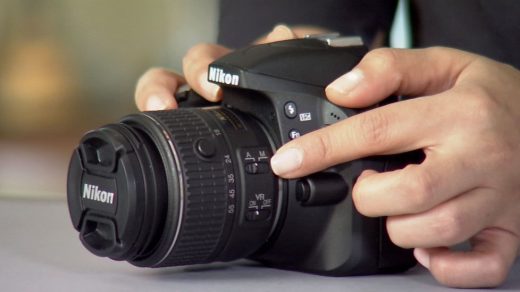If you have a love of art history, whether that be based in fine arts or modern art, and you want to put that passion into an educational setting, then you may be thinking about becoming an art history professor after you get your graduate degree.
If this is a road you would like to explore more, then you are in luck as today we will be discussing the steps it takes to teach art history and what most art history professors will do to get on the right path.

What Does an Art History Professor do?
Art history professors have a lot of duties in their line of work, and aspiring art professors should know what they are getting themselves into before they focus on getting a master’s degree or doctoral degree in art.
Conduct Research
To keep on top of art history topics, art objects, artifacts, and methodologies, future professors will need to make sure that in their field of study, they know what is currently happening in the art world so that they are teaching students correctly, connecting the past to the present.
Preparing Course Materials
For all classes, they need to make sure that the syllabi, lecture notes, and handouts are properly created with the relevant information that will help students with their classes and exams.

Teaching Undergraduate and Graduate Courses
Courses at various levels will have specific requirements for teaching students. This means topics such as art history theory, methodology, and culture will need to be adapted to the level they are teaching at.
Maintaining Relationships
It is essential that an art professor establishes and maintains good relationships with their students, colleagues, and department members so that they can do their job efficiently and effectively which will not only help the students but the establishment too.

Why Become an Art History Professor?
When you think about becoming an art teacher at any level, whether it is focused mainly on art history or just teaching contemporary art in school, there are a lot of positives when it comes to art education.
Art history professors get to combine two things that they enjoy, the study of art which delves into the history of the world and how it influences artists today.
Where do They go?
An art professor will teach at a college level, but many art history professors will also give lectures at museums and art galleries, or work as private consultants where they will appraise artwork.
So, there is a lot that art professors can do, and with the extra background in history, that will also open up a lot of avenues that can keep them teaching graduate students/undergraduate students, or branching out into the art world.

How do They Influence Students
Art history does have an important place in colleges and schools, especially as it teaches not only about the past but how society influences how we express ourselves and what is happening within the current climate.
Art history teachers will help students build on their analytical skills whilst appreciating visual arts using historical context.
Understanding the development of artistic styles and techniques as well as what their background is can open students up to a different world which can have an impact on what they want to do once they graduate.

How to Become an Art History Professor
There are teaching skills that art history professors need to have as well as educational and training requirements.
Below are some of the steps that an aspiring art history professor will need to take before they can get into a teaching position in the arts.
Graduate From High School
A bachelor’s degree is needed to become a professor, so that means graduating high school first to make sure they are able to get into college.
Taking art history classes or art strategy can be very beneficial with going for a bachelor’s degree down the road (or going for master’s degrees, depending on what else you would like to be qualified to teach).
Volunteering can also be a great help to your future education. You can look at local community centers or art programs in your area to get a leg up.

Get a Bachelor’s Degree
You need a minimum qualification of a bachelor’s degree to work as a professor, but a master’s degree is also seen as a good degree to have when applying for jobs.
The core subjects that are in some of these bachelor’s degrees are things such as mathematics, science, art history, drawing techniques, and so on.
You may also be allowed to take elective classes as well which will have a whole range of subjects that you can choose from depending on what you would like to go for.
Music, art, media arts, drama, dance, videography, digital arts, music history, etc., are ones that you can choose, you would need to do your research first to see what specific subjects may help you obtain the position you want.

Get Your Teaching Certification
Alongside your bachelor’s degree, you will also need to make sure that you have your teaching certification so that you are able to legally teach in your state.
You will need to clock in a certain number of teaching hours as well as pass the teacher’s test.
You could look at teaching assistants jobs to help you get some of your hours in.
Once you have all you need for that and you have graduated, whether with a bachelor’s degree or a master’s degree, you are then fully qualified to start searching for a job.
Keep Developing Your Skills
You will need to develop your art skills as you are learning/working, so it may be best to look at part-time teaching positions as well as continue with your own art which you can make a portfolio out of to show potential employers.

You Might Need a Master’s Degree
In some teaching positions, you might need to get a master’s degree to teach, this will help you reach further in your academic field and you could be hired for other positions which can mean a salary bump as well.
If the school you have applied to offers an internship, then this could aid you in getting your foot in the door without having to do a master’s degree, but it does depend and you will need to speak to the educational establishment first.

Apply to Professor Positions
It can be quite competitive out there, so you will need to show employers that you are committed to the work you do and that you want to be an art history professor.
Some art history professors will seek employment as adjunct professors which are part-time positions.
Being an assistant professor can help with earning more real-world experience, which is perfect for portfolios and resumes.

Art History Professor Salary
The salary of an art history professor will depend on their level of education as well as the years of experience they have, and where they are working.
The median annual salary of an art history professor will be around $66,000, but the top salary is up to $152,000.
These numbers will fluctuate depending on the changes in salary, cost of living, etc., but that is what it is and could potentially be.
You may not be becoming an art history professor for the money, but it is a positive being in that position, and that salary can grow if you start doing private consultations, or go and work for businesses or individuals.

Conclusion
Now that you know how to become an art history professor, hopefully, you have been able to make a decision about what you want to do and where you would like to go.
It can be a very rewarding career influencing many people in the process, and you could possibly be a part of art history yourself if you become a big part of that world.



